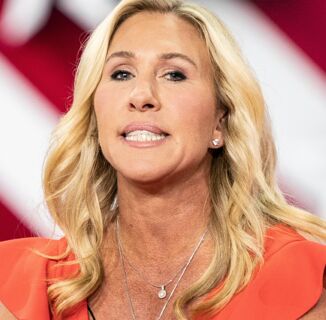California has begun issuing state IDs and driver’s licenses that allow for a third gender option, the same week that New York City began allowing gender-neutral birth certificates. Both mark major triumphs for residents who identify as non-binary, as well as for the transgender community at large.
The California Department of Motor Vehicles (DMV) added the option of an “X” gender marker for those who do not identify on the traditional gender binary as male (“M”) or female (“F”). The policy went into effect Wednesday in accordance with SB 179, also known as the Gender Recognition Act, which sanctions residents to self-identify their gender. The law was officially signed by exiting Governor Jerry Brown on October 15, 2017.
Today a key piece of my bill #SB179 became effective and tomorrow, for the first time ever, many Californians can go to the @CA_DMV & select a gender marker for their driver’s license or ID card—M, F or nonbinary (X)—that matches their identity! Details==> https://t.co/SVD8KGAeXx
— Senator Toni Atkins (@SenToniAtkins) January 1, 2019
In a similar fashion, both NYC-based parents, and non-binary or genderqueer adults born in the city, can also choose an “X” gender marker when updating or issuing birth certificates. These changes come only months after Mayor Bill de Blasio signed the bill into law in October, all in an effort to “[further] the city’s commitment to defending the rights of our LGBTQ community,” as he said at the time. New York City’s new policy replaces a previous one that required transgender people to supply a doctor’s letter in order to change the sex on a birth certificate.
While California might be the latest state to offer a non-binary marker on IDs and driver’s licenses, it isn’t the first. Colorado officially began rolling out “X” gender markers last November, while Arkansas started issuing them without fanfare in 2010. Maine, Oregon, and Minnesota also offer third gender options, as does Washington, D.C.
In addition to New York City, California, Oregon and Washington also allow for a non-binary gender option on birth certificates, with New Jersey slated to join them with similar legislation that goes into effect on February 1.
“Transgender and gender non-conforming New Yorkers deserve the right to choose how they identify and to live with respect and dignity,” de Blasio asserted this week in a statement to the press. “This bold new policy advances the fight for equality and makes our city fairer for all people.”
Even though the U.S. government does not recognize the existence of genderqueer people on a federal level, legislation like California’s SB 179 and New York City’s latest gender-neutral provision has shed a light on non-binary visibility and representation to some in a way that never before seemed possible.
“Having a vital document like a driver’s license that correctly reflects your gender is such a basic, yet crucial component to living your everyday life,” Daniel Ramos, Executive Director for LGBTQ advocacy organization One Colorado, told INTO in November. “Yet, non-binary Coloradans would have to choose between a ‘M’ or ‘F’ designation that may not match their gender identity. This has opened up non-binary individuals to being forced to explain their gender identity when it’s nobody’s business but their own.”
More importantly, California’s SB 179 bases gender on self-attestation, as opposed to verification by a medical professional––meaning that the accuracy of each individual’s gender identity is determined by that individual. The law also makes it easier for trans and non-binary people to change their gender markers on other legal documents, such as––you guessed it––birth certificates.
Legal precedents set by laws like SB 179 serve for some as a beacon in the midst of the current White House administration, which has made notable, concerted efforts to limit the definitions of gender to a traditional, non-inclusive binary. In October, a New York Times article reported an alleged attempt by the Department of Health and Human Services (HHS) to issue a memo relegating gender to be determined “on a biological basis that is clear, grounded in science, objective and administrable”––i.e., limited to genitalia.
The issuance of a third gender option for California state IDs and NYC birth certificates also coincides with a federal appeals court ruling to uphold President Donald Trump’s 2017 ban on transgender personnel from serving in the military, despite three preliminary injunctions still in effect from courts in California, Maryland, and Washington.
Despite the Trump administration’s push-backs against the trans community, many are still celebrating what they consider an important step in non-binary visibility, even if they view it on a smaller, more personal scale.
“[Having an ‘X’ gender marker on my ID will] be a big step for me because I’ll be proud and happy to have an ID that reflects my identity,” said Dominique Dickey, a 19-year-old Los Angeles-based student who identifies as genderqueer, in an interview with INTO. Dickey, who uses they/them pronouns, said that gender markers might not carry as much weight as their ID photo, age, or name, but to them, that’s not the point.
“The ‘X’ gender marker means that I can do something tangible to honor the identity that I’m growing into,” said Dickey.
Don't forget to share:
Help make sure LGBTQ+ stories are being told...
We can't rely on mainstream media to tell our stories. That's why we don't lock our articles behind a paywall. Will you support our mission with a contribution today?
Cancel anytime · Proudly LGBTQ+ owned and operated
Read More in Impact
The Latest on INTO
Subscribe to get a twice-weekly dose of queer news, updates, and insights from the INTO team.
in Your Inbox












